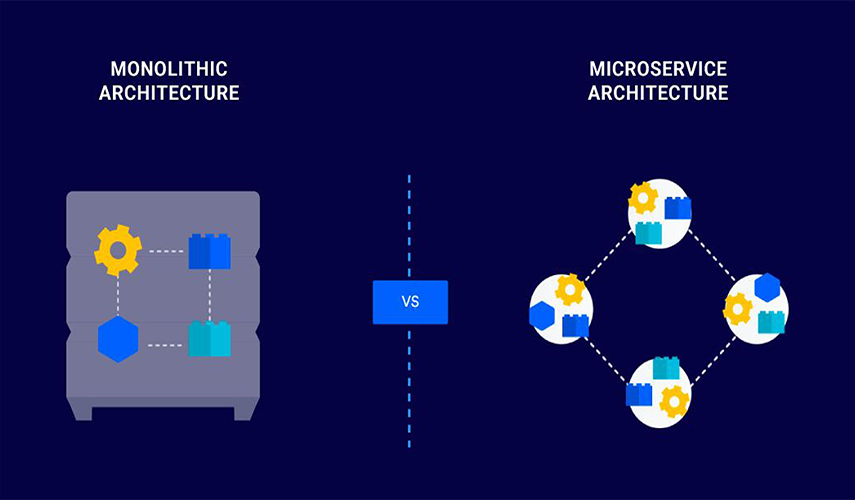
Microservices vs Monoliths
The comparison between microservice and monolithic architectures reveals that microservices are generally better for cloud-native applications requiring high scalability and agility. However, monoliths can be the more practical and cost-effective choice for smaller projects or startups, especially during the initial stages of development.
Monolithic architecture
A monolithic application is built as a single, cohesive, and self-contained unit, with all components tightly coupled and running as a single service.
Pros:
- Faster initial development: A single codebase is easier for smaller teams to build, test, and deploy, making it ideal for Minimum Viable Products (MVPs).
- Lower initial cost: Requires fewer infrastructure components and less complex setup than a distributed system, reducing initial investment.
- Simpler to debug: Troubleshooting is more straightforward within a single process, as developers can trace data movement easily.
- Higher performance for internal communication: Since all components share the same memory, internal function calls are faster and more efficient than network communication.
Cons:
- Poor scalability: You cannot scale individual components. Any scaling requires replicating the entire application, which is inefficient and wasteful.
- Slower development cycles at scale: As the codebase grows, it becomes complex and difficult to manage. A single change requires re-testing and re-deploying the entire application, which slows down releases.
- Single point of failure: A bug in one module can potentially crash the entire application, affecting its reliability.
- Technology lock-in: The entire application must use the same technology stack, making it difficult and expensive to adopt new languages or frameworks.
Microservices architecture
A microservices application is broken down into a collection of small, independent, and loosely coupled services. Each service represents a specific business function and can be developed, deployed, and scaled independently.
Pros:
- Superior scalability: Individual microservices can be scaled independently based on demand, leading to more efficient resource allocation.
- Greater agility: Autonomous teams can work on different services in parallel, enabling faster development cycles and independent deployment of new features.
- Enhanced resilience and fault tolerance: The failure of one service is less likely to affect the entire application. Other services can continue functioning, improving overall uptime.
- Technology flexibility: Teams can choose the best technology stack for each service, which promotes innovation and prevents vendor lock-in.
- Continuous delivery: The independent nature of services supports automated CI/CD pipelines, allowing for frequent and faster release cycles.
Cons:
- Increased complexity: Managing a distributed system with many services, databases, and network communication adds significant operational overhead and management complexity.
- Higher operational overhead: The cost and effort of implementing comprehensive monitoring, logging, and automated CI/CD pipelines for numerous services can be higher.
- Greater development challenges: Developers must handle issues like network latency, service discovery, data consistency, and debugging across distributed services.
- Potential security issues: More communication over the network increases the attack surface, requiring robust security protocols.
